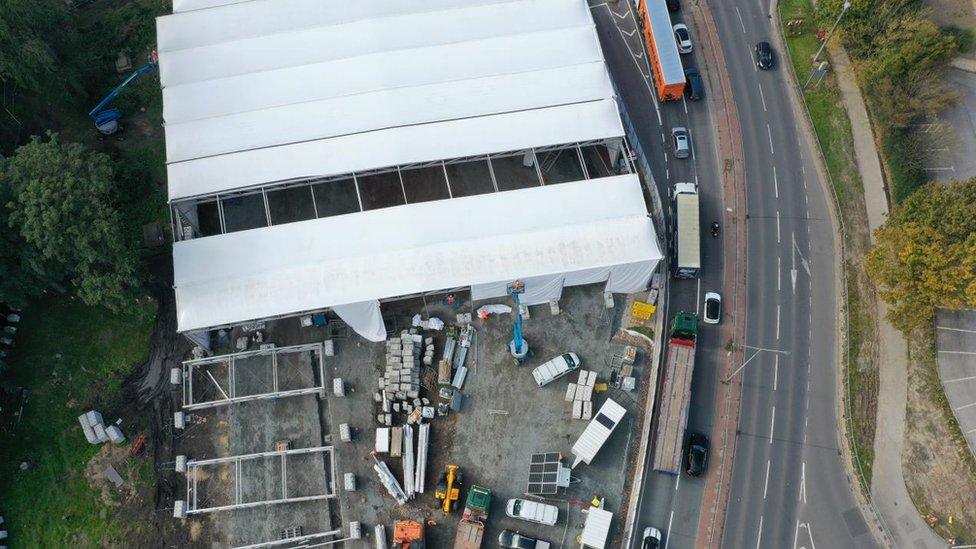Earl de Grey, Hull: Deconstruction of historic pub starts
- Published

The pub's green-tiled facade has been hidden behind boarding
Work to deconstruct a Grade-II listed pub by hand before it is rebuilt nearby has begun.
The frontage of the historic Earl De Grey, in Hull, is to be taken down one piece at a time.
It has to be moved because of the redevelopment of the A63 Castle Street where it currently stands.
The parts are to be tagged and stored until the frontage can be reconstructed about 100ft (30m) away in its new location in 2021.
The Earl De Grey had a colourful reputation due to its seafaring past and spawned numerous stories, including many about the talkative parrot that frequented the bar.
The pub, closed since 2005, was built in the 1840s when it was originally known as the Junction Dock Tavern.
The painstaking process of dismantling and storage could take up to five weeks and the unlisted rear of the building is to be demolished.
Jonathan Stubbs, of developers Wykeland, said: "The Earl De Grey is one of Hull's oldest pubs and we fully appreciate the responsibility we have to preserve this important part of the city's rich heritage."
The pub is close to the two giant tents erected while 19,000 bodies are exhumed from a cemetery as part of the revamp of the A63 route.

The main shell and frontage of the Earl De Grey is to moved next to a renovated Castle Street Chambers
The newly-positioned Earl De Grey is due to be linked by a glass extension to a renovated Castle Street Chambers.
Memories of the pub are being collected as part of the deconstruction project to be kept at Hull History Centre.

Follow BBC East Yorkshire and Lincolnshire on Facebook, external, Twitter, external, and Instagram, external. Send your story ideas to yorkslincs.news@bbc.co.uk, external.
- Published16 October 2020

- Published8 April 2019

- Published14 March 2018
